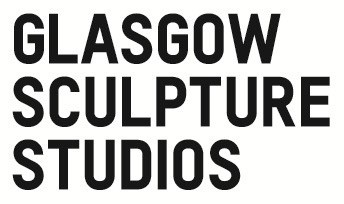the objects
THE OBJECTS
16 February – 6 April 2013
Ulla von Brandenburg , Runa Islam, Mark Leckey, Liliana Porter, Elizabeth Price and Jessica Warboys.
This exhibition identifies a distinctive area of interest among artists who have created ‘portraits’ or vignettes featuring inanimate sculptural objects using film and video. Looking primarily at the ways in which the status or presence of sculptures can be conveyed or manipulated by the moving image, it considers methods in which film and video can offer the viewer a different way of looking, examining and critiquing objects, their purpose and display.
In Ulla von Brandenburg’s The Objects 2009 (from which the exhibition takes its title) objects which might typically be used as props become the subjects. The viewer watches as the camera glides through a succession of these things – a fan, a flute, a shirt, a chessboard, a rope – as they dance and disappear in turn. Despite the objects appearing to have a life of their own, the viewer is reminded of their usual motionless state when the strings required to animate them are occasionally seen. Jessica Warboy’s landscape in Pageant Roll 2012 is one of ancient stone sculptures in the English countryside. Intermittently other unusual objects appear – a red wooden square perches on a rock and then is gone again, a green fluffy umbrella drifts across the screen, a pair of hands holds a glass sculpture against the sky – disrupting the normality of nature. These almost surreal moments help to focus the viewer’s attention more acutely on what they are looking at and in turn change the viewer’s perception.
Runa Islam’s recent work Meroë 2012, filmed with 16mm, was produced using the traditional technique of multiple exposures. Her subject, an ancient sculpture from the collection of the British Museum, is filmed using cuts from a number of different angles and positions creating a fractured, often confusing, and incomplete image of the object. The film removes any trace of narrative or context and questions traditional modes of viewing. Conventional expectations of the display of sculpture within museums and galleries are thus undermined.
In Elizabeth Price’s At the House of Mr X 2007 the camera guides us through the immaculate home of a private art collector where the elegant geometry of the spaces, the varied architecture and the luxurious modernist furnishings are attentively documented. The narration is presented as an on-screen script, at first using dead-pan descriptions of the objects the camera encounters, later developing a more sophisticated tone reminiscent of slick advertising copy. The text is taken from various documents relating to the house and its owner – a businessman who generated his wealth from the cosmetic brands of Mary Quant and Outdoor Girl. The descriptions of cosmetics are acutely similar to those used to describe the furniture and objects displayed in the house. The link between the façade of beauty created using make-up and that of interior design, ‘curating’ and the juxtaposition of objects is made explicit.
Humour, irony and music are key components of works by Mark Leckey and Liliana Porter. March of the Big White Barbarians 2006 by Leckey takes the viewer through a series of still images of London’s public sculptures. It is accompanied by a soundtrack of Maurice Lemaitre’s concrete poetry interpreted and performed by the artist’s own band Jack Too Jack. This satirical visual essay on the all too similar styles of such work exposes the seemingly arbitrary choices made by the people (or the Big White Barbarians) who have commissioned them. We are given no sense of their purpose or indeed the identities of the artists that have made them – making them as anonymous to the lens as they are to their publics. Porter on the other hand, in the video Fox in the Mirror 2007, creates a concert in five parts using a multitude of small, often kitsch, inanimate objects. The various scenes, along with the music (composed by Sylvia Meyer) deliver comedy, tragedy, familiarity and perplexity. The work ultimately, however, examines the meanings that we impart onto such objects and thus the meaning of what we deem to be reality.
Film and video can provide a space and the critical distance to discuss the environment and method of presentation of sculpture in either museums, private collections or as a public artwork. It can provide a place where reality is suspended and artifice and illusion are able to co-exist with the tangible. The way that we treat objects and sculptures can invest them with power or frailty, humour or solemnity, which often gives them a ‘life’ of their own. These film and video works however, also reveal the ways in which inanimate things might have the ability to change the perception and realities of those who come into contact with them.
Glasgow Sculpture Studios is supported by Creative Scotland, Glasgow Life and LiteLab. This exhibition is generously supported by New Media Scotland, Global Experience Specialists (GES) Ltd and Tiger Beer.




